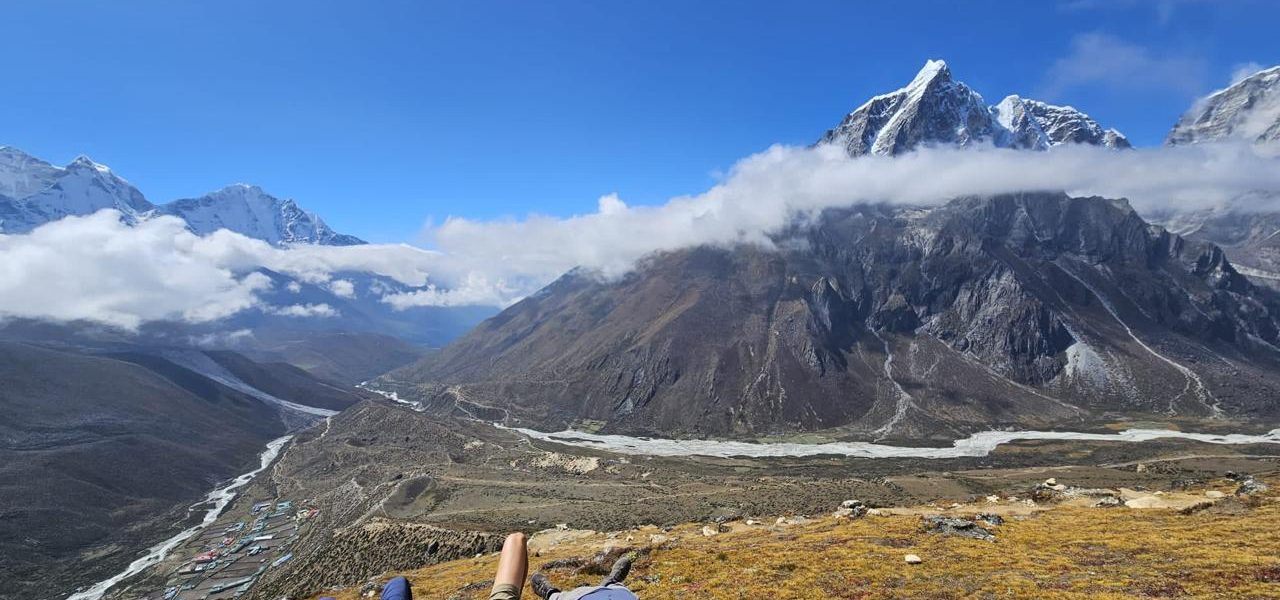Cho La Pass Difficulty
The Cho La Pass is one of the more challenging sections of the Everest region treks, and its difficulty lies in several factors. Here’s a breakdown of what makes it demanding. The Cho La Pass Trek is a stunning and adventurous route in the Everest region of Nepal that combines the Everest Base Camp (EBC) trek with a visit to the breathtaking Gokyo Lakes. This trek provides a more comprehensive experience of the Everest region, blending iconic landmarks, high-altitude challenges, and stunning alpine scenery.
Altitude
- The pass sits at an altitude of 5,420 meters (17,782 feet), where the air is thin, making breathing harder.
- Altitude sickness (Acute Mountain Sickness, or AMS) is a significant risk. Proper acclimatization days are crucial before attempting the pass.
Steep and Technical Terrain
- Ascent: The climb to the pass involves steep sections with loose rocks, scree, and boulders.
- Descent: On the Gokyo side, the descent can be icy and slippery, especially in early mornings or winter months.
- The trail often requires scrambling over rocks and ice, so sure-footedness and balance are important.
Weather Conditions
- Weather can change rapidly at high altitudes. Snowfall, high winds, or poor visibility can make the crossing more difficult.
- Icy trails may require crampons or microspikes, especially in colder months (November-March).
Glacier Crossing
- There’s a glacier at the top of the pass, which is often icy and covered in snow. Crevasses may be present, requiring careful navigation.
- Early mornings are preferred for the crossing, as the snow is firmer, reducing the risk of slipping.
Physical Demands
- The trek to and from Cho La Pass includes long hiking days, often 6-8 hours or more.
- Carrying a daypack with essential supplies adds to the physical challenge.
Who Can Attempt the Pass?
- Fitness Level: This trek is best for experienced trekkers with good physical fitness.
- Trekking Experience: Prior experience with high-altitude trekking and familiarity with using trekking poles or crampons is helpful.
- Mental Preparation: The challenge is not only physical but also mental, as the trek requires focus and determination.
Tips for Managing the Cho La Pass Difficulty
- Acclimatize Properly: Spend extra days at lower altitudes (e.g., Namche Bazaar or Dingboche).
- Start Early: Begin the crossing at dawn to avoid afternoon weather changes and icy conditions.
- Pack Wisely: Carry water, snacks, crampons, and warm clothing.
- Hire a Guide: A local guide can assist with navigation and assess safety on the trail.
- Know Your Limits: If you feel unwell, avoid attempting the pass and consider an alternative route.
Overview
- Duration: 16-21 days (varies based on pace and itinerary)
- Difficulty: Strenuous
- Max Altitude: 5,545m (Kala Patthar) / 5,420m (Cho La Pass)
- Best Time to Visit:
- Spring: March to May
- Autumn: September to November
Highlights Cho La Pass Trek
- Everest Base Camp: Walk the classic route to the base camp of the world’s highest mountain.
- Kala Patthar: A panoramic viewpoint offering unparalleled views of Mount Everest.
- Cho La Pass: A challenging high-altitude pass (5,420m) with spectacular views of glaciers and mountains.
- Gokyo Lakes: Turquoise glacial lakes surrounded by rugged peaks.
- Gokyo Ri: Another incredible viewpoint for a 360-degree view of Everest, Cho Oyu, Lhotse, and Makalu.
- Sherpa Villages: Explore Namche Bazaar, Tengboche, and other villages, experiencing Sherpa culture and hospitality.
While the Cho La Pass is a strenuous challenge, the reward of crossing it is immense—stunning views of glaciers, peaks, and valleys make it a highlight of the trek. Moreover, Would you like more detailed advice or assistance for Cho La Pass trek?




